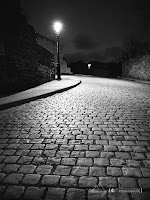 |
| If Joseph Cook Were Alive Today |
In the
late eighteenth century, the Quaker community in Bush River, South Carolina,
was home to the Quaker family of Isaac Cook.
The Society of Friends from its inception had stood for non-violence and
sought to prevent war by alleviating the problems that caused them. There were some among the American Quakers,
including Betsy Ross, who supported the Americans in their revolution against
England, but from what I can tell the Cook family remained true to their
pacifist roots. Isaac Cook’s wife,
Charity Wright Cook, was a very well-known woman missionary of the Quaker faith
and had an important ministry not only in the United States but in England and
France. It would be hard to imagine such
a devoted Quaker countenancing war.
At the
time of the Revolution, South Carolina, like most colonies at that time, was
politically divided with the Whigs supporting the American cause and the Tories
supporting King George. The Whigs
generally considered the Quakers to be Tory sympathizers due to their
unwillingness to support the war and even lodged charges of treason against them. At the same time, the Tories distrusted the
Quakers not only because of their neutrality, but probably from some residual hostility from the days in England when Quakers were persona non grata. It
was not an easy time for the Society of Friends.
Joseph
Cook, the oldest child of Isaac and Charity Cook, would have been 13 in 1776,
when the Revolution began, too young to take up arms at that time. But
apparently he remained true to the teachings of his church throughout the
duration of the war, even though he knew he could be charged with treason by
either side.
One day in
1780, when Joseph was 16 or 17 and, no doubt, considered old enough to take
part in the fight, he was captured by “an armed band,” of which persuasion is
not recorded. Ordered to join them,
young Joseph refused, knowing that his refusal meant death—no matter which side
had gotten a hold of him. And, true to Joseph’s expectations, the captain
ordered that he be shot. Preparations
were underway when Mary Herbert, probably 15 years old at the time, appeared on
the scene. She approached the armed men
and boldly proclaimed that they could not kill Joseph because he belonged to
her! She actually picked Joseph up
(presumably he had been bound) and began to move away from his
captors.
 |
| What Mary Herbert Might Have Worn |
Algie I.
Newlin, in his biography of Joseph’s mother, tells what followed best: “The
captain of the company must have been amused, for he told her that if she could
carry him out of range of their muskets and rifles, she could keep him, but if
she allowed his feet to touch the ground they would start shooting. Evidently Mary Herbert mustered her full
strength to meet this vital challenge, for she is reputed to have carried
Joseph Cook over the hill and out of the sight and range of the armed band. In
all probability she saved his life. Two
years later she legalized her claim to Joseph by marrying him.”
 |
| What the Captor Might Have Worn |
The couple were
married in Bush River on November 30, 1782, when Joseph was 19 and Mary 17
(both had birthdays approaching soon).
There was just one problem. Mary
was not a Quaker, so Joseph Cook was no longer able to hold membership with
Bush River Monthly Meeting. The two
remained in Bush River and raised a family of sixteen children, including Uriah
Cook, my direct ancestor, who moved out to Pottawatomie County, Kansas, in the
early 1850s.
 |
| Joseph Cook's Headstone |
Sources:
“Betsy
Ross.” Wikipedia. 25 Apr. 2013. Web. 27 Apr. 2013.
Newlin,
Algie I. Charity Cook: A Liberated
Woman. Friends United Press, 1981.
“Who Are the Quakers?”
Clinton County Visitor’s Bureau.
30 Aug. 2010. Web. 27 Apr. 2013. http://www.clintoncountyohio.com/blog/who-are-the-quakers/
Wulf, Karin A. “‘Despise
the Mean Distinctions [these] Times Have Made’: The Complexity of Patriotism
and Quaker Loyalism in One Pennsylvania Family.” American University. H-Net: Humanities and Social Sciences Online. n.d.
Web. 27 Apr. 2013.
Images:
Colonial Dress. Artfire.com. Web. 27 Apr. 2013. http://www.artfire.com/ext/shop/product_view/thesewingcottage/6397756/colonial_womens_costume_sizes_and_color_available/handmade/clothing/costumes/time_periods
Joseph Cook
Headstone. Ancestry.com member Erin
Rivera. 7 Sept 2012. Web. 27 Apr. 2013. http://trees.ancestry.com/tree/46310353/photo/d8Spt4bXk2ZMTlxC4q0JyjFmbGBcRkciBNPSRkFtUsH1mn6DDn5tr_!LzPheR5Qw
Quaker
T-Shirt. For sale on Zazzle. Web. 27
Apr. 2013.
Revolutionary
War British 60th Regiment Greatcoat “redcoat” Museum Reproduction. Sold on eBay by
jonkypros. 28 Jul 2012. Web.
27 Apr 2013. http://www.ebay.com/itm/Revolutionary-War-British-60th-Regiment-Greatcoat-redcoat-Museum-Reproduction-/280910688610




















